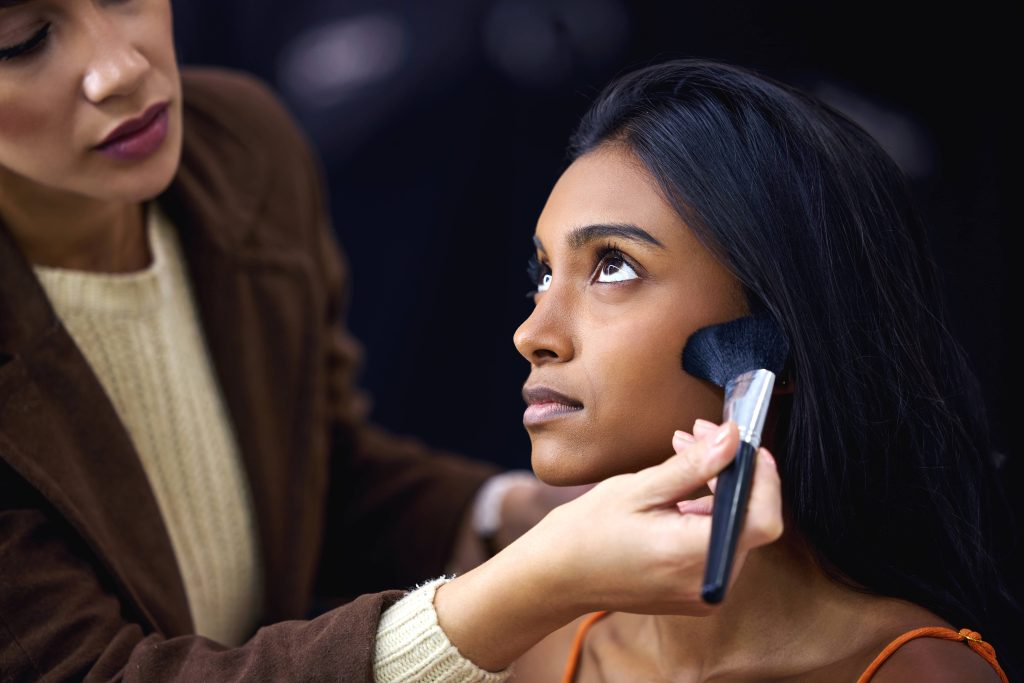
In the rapidly evolving world of beauty, the digital transformation has introduced a seismic shift in how we perceive, interact with, and consume beauty products and services. As we navigate through this digital age, beauty trends are not just reflecting changes in aesthetics but are deeply intertwined with technology, social media, and e-commerce platforms. These trends have been accelerated by the need for personalization, inclusivity, and sustainability, reshaping the way we understand and experience beauty.
The Rise of Virtual Try-Ons
One of the most significant changes brought about by digital transformation is the shift from traditional in-store experiences to virtual try-ons. Augmented Reality (AR) technologies have made it possible for consumers to try on makeup and hairstyles virtually. Brands like Sephora, L’Oréal, and MAC have developed apps and partnered with tech companies to create seamless virtual experiences. This trend not only enhances the shopping experience by making it convenient and risk-free but also caters to the growing demand for personalization. Users can experiment with colors and styles that they might not have considered otherwise, promoting creativity and individualism.
AI-Powered Personalization
Artificial Intelligence (AI) is taking the beauty industry by storm, offering hyper-personalized experiences to consumers. Brands are using AI to analyze skin conditions and create customized skincare routines. For instance, apps that scan your face and suggest products tailored to your skin type are becoming mainstream. This technology is paving the way for products that are specifically designed for individual needs, increasing customer satisfaction and loyalty.
Moreover, AI-driven chatbots and virtual beauty advisors are revolutionizing customer service by providing instant recommendations based on user preferences and previous purchasing history. This level of personalization not only enhances the shopping experience but also builds a deeper connection between brands and consumers.
The Power of Influencers and User-Generated Content
Social media platforms like Instagram, TikTok, and YouTube have become essential channels for discovering beauty trends. Influencers and beauty gurus wield considerable influence, often setting trends and swaying consumer decisions by showcasing products through tutorials and reviews. During the digital transformation, the role of these influencers has morphed to incorporate more authenticity and transparency, with audiences demanding honest and real-life representations of products.
Furthermore, the surge in user-generated content has democratized the beauty industry, enabling consumers to become content creators and influencers, regardless of their follower count. This shift has resulted in a more inclusive beauty culture, where diverse skin tones, body types, and genders are celebrated widely.
E-Commerce and Direct-to-Consumer Models
The pandemic-induced lockdowns acted as a catalyst, accelerating the shift towards e-commerce in the beauty industry. Brands that previously relied on physical stores have adopted digital-first strategies, focusing on online sales and direct-to-consumer models. This transformation offers benefits like increased reach, more comprehensive consumer data, and the ability to engage directly with customers.
Subscription boxes and personalized beauty kits are on the rise, fueled by the convenience of trying new products from the comfort of home. Moreover, the integration of AI into e-commerce platforms is enhancing the shopping experience through personalized recommendations, predictive purchasing, and seamless checkouts.
Sustainable Beauty in the Digital Age
Sustainability is no longer just a buzzword; it’s a driving force behind many beauty trends today. Digital transformation enables greater transparency, allowing consumers to make informed choices about sustainable products. Brands are increasingly adopting eco-friendly practices, such as using biodegradable packaging, eliminating harmful ingredients, and opting for cruelty-free testing methods.
Technology also plays a pivotal role in sustainable beauty. Companies are investing in green technologies that reduce environmental impact, such as developing products with minimal water usage and lower carbon footprints. As a result, consumers can align their purchasing decisions with their values more effectively.
Inclusivity as a Core Value
Digital transformation is championing inclusivity in the beauty industry. Social media and digital platforms provide a stage for underrepresented voices to be heard and seen, paving the way for broader representation in advertising and product offerings. Brands are now expanding their product lines to cater to a wider range of skin tones and hair textures, acknowledging and celebrating diversity.
Moreover, the rise of gender-neutral and gender-inclusive beauty products reflects the changing societal norms and expectations. By embracing diversity and inclusivity, the beauty industry is not only widening its consumer base but also fostering a more accepting and supportive community.
The Future of Beauty Tech
As technology continues to advance, the future of beauty looks incredibly promising. Innovations such as wearable beauty tech, smart skincare devices, and 3D-printed makeup are on the horizon. These developments promise to enhance personalization, efficiency, and convenience in the beauty industry.
With an increasing focus on digital wellness, technology will also play a role in monitoring and improving customers’ mental and physical health through beauty products. Mindful beauty, which includes practices that boost self-esteem and mental well-being, is likely to become a significant trend in the coming years.
In conclusion, the digital transformation is redefining beauty trends, making them more diverse, personalized, and inclusive. By embracing technology, the beauty industry is not only innovating and adapting to the needs of a modern audience but also paving the way for an exciting and inclusive future. As consumers, we are now at the forefront of this transformation, with the power to influence and enjoy an industry that’s more accessible and innovative than ever before. So whether you’re a beauty enthusiast or a casual consumer, there’s never been a more thrilling time to explore the world of beauty.



